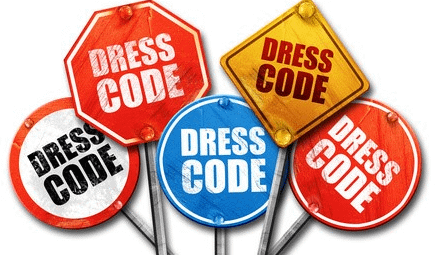Sexism in the Dress Code

The sexual double standard originated in the 1920s as a byproduct of the women’s rights movement. As morals began to collapse and promiscuity was normalised, sexism became a part of the fabric of our nation. Women were penalised for being sexually active, whereas men were rewarded. For the most part, women are no longer treated with this unjustified contempt, but the sexual double standard remains prevalent in our school systems thanks to our archaic dress codes.
Clothes are increasingly relevant as a form of self expression, however this self expression is limited in many high schools, including Wayne Valley. The most basic styles, such as those which expose the midriff and shoulders, are strictly prohibited. The school board’s justification is that girls’ bodies are a distraction in the classroom. When did it become okay to tell young impressionable female students that it is their fault someone is attracted to them? Having a dress code is body shaming. Restricting an innocent style of dress is telling a girl that there is something wrong with her body. In a generation where low self esteem is a prevalent issue, restricting styles of dress sexualises a girl in the very manner it is trying to prevent.
That brings me to the most common argument in defense of the dress code: that boys’ clothing is restricted, too. Well, that’s not wrong, but in reference to how much skin is covered, our school’s student handbook states “No pupil may wear clothing which reveals his or her back, midriff, upper thigh or cleavage; no pupil may wear clothing which exposes any underwear, or which is ‘see through.’” Well, how many of those specifications actually apply to male students? The styles listed are not commonly worn by male students. The dress code even specifically references cleavage, which I doubt is a concern for most boys.
I remember the very first time I was sent to the office because of my clothing. I was wearing a modest white dress that covered my shoulders and reached my knees. The only way it violated the dress code was that an inch of the midriff was lace, and my skin could be seen through the “sheer” fabric. I was humiliated that a teacher thought I looked inappropriate, and the hardest part was explaining to my friends why I was in a different dress that afternoon. Because the first dress had been “indecent” and “inappropriate for school.” Years later, I am not ashamed to show my body off. Low cut tops and short skirts are a staple in my wardrobe. But I have been dress coded at least a half dozen times, and sometimes when I look in the mirror before I go out, the long suppressed fear of showing too much skin rears its ugly head. Without a school dress code, I don’t think I ever would have seen something wrong with a sheer midriff, short skirt, or tank top.
These are the lessons that the dress code teaches young girls. That their bodies are indecent, and that they are to blame if they are sexualised by another student or even a member of the faculty. In the past, the dress code was a socially relevant method of protecting girls from being objectified, but that is no longer true. Now, it serves only to humiliate female students and to damage their already fragile self esteem. It’s time the school board does away with, or at the very least updates, our outdated, unjust, and blatantly sexist dress code.
